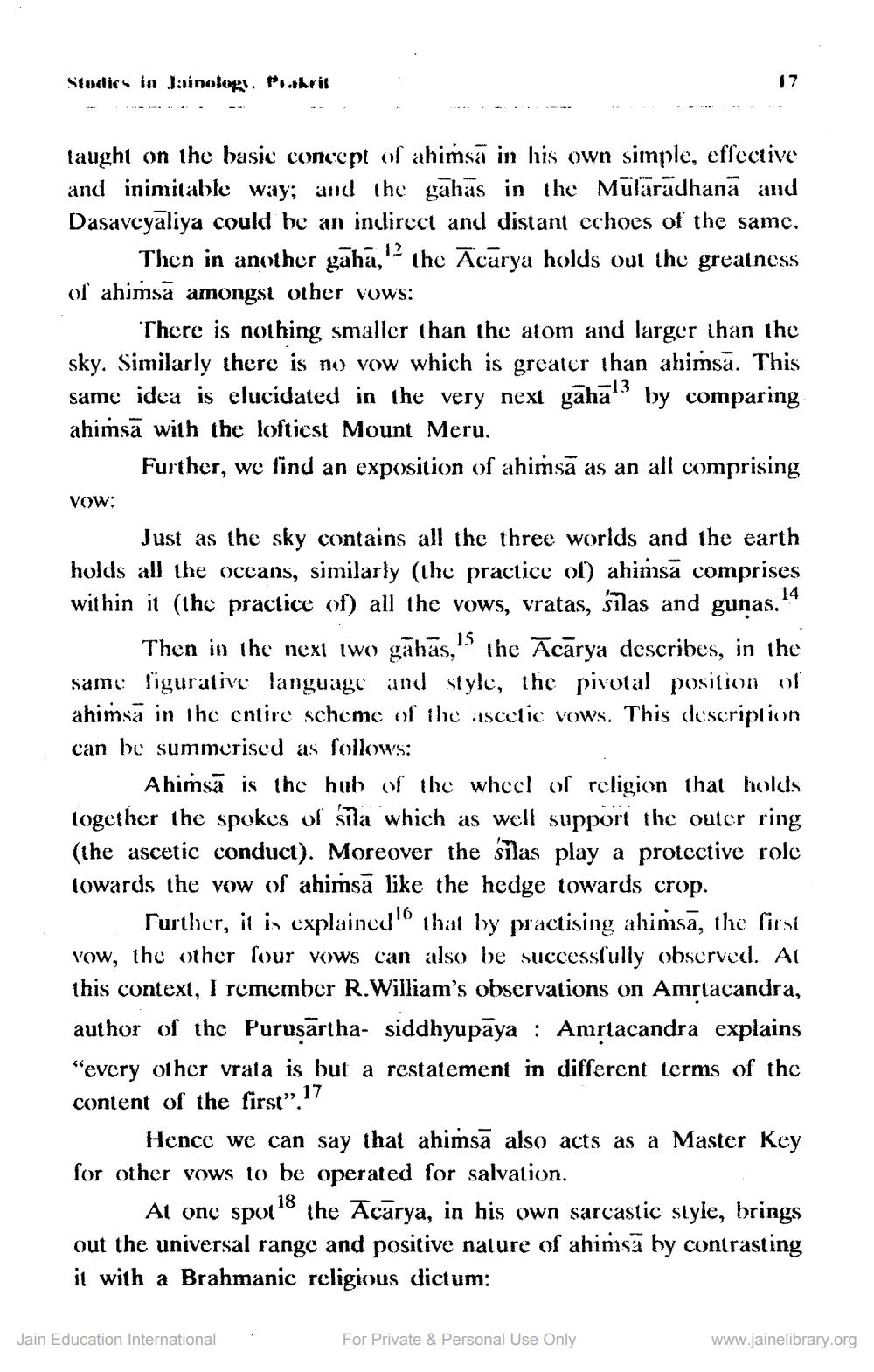________________
Studies in Jainology. Prakrit
taught on the basic concept of ahimsa in his own simple, effective and inimitable way; and the gahas in the Muläradhana and Dasaveyaliya could be an indirect and distant echoes of the same. Then in another gaha, the Acarya holds out the greatness of ahimsa amongst other vows:
12
There is nothing smaller than the atom and larger than the sky. Similarly there is no vow which is greater than ahimsā. This same idea is elucidated in the very next gaha13 by comparing ahimsa with the loftiest Mount Meru.
-13
Further, we find an exposition of ahimsa as an all comprising
VOW:
17
Just as the sky contains all the three worlds and the earth holds all the oceans, similarly (the practice of) ahimsa comprises within it (the practice of) all the vows, vratas, šilas and gunas.
15
Then in the next two gahās," the Acarya describes, in the same figurative language and style, the pivotal position of ahimsa in the entire scheme of the ascetic vows. This description can be summerised as follows:
14
Ahimsa is the hub of the wheel of religion that holds together the spokes of sila which as well support the outer ring (the ascetic conduct). Moreover the silas play a protective role towards the vow of ahimsa like the hedge towards crop.
Further, it is explained that by practising ahimsā, the first vow, the other four vows can also be successfully observed. At this context, I remember R.William's observations on Amṛtacandra, author of the Puruṣartha- siddhyupaya Amṛtacandra explains "every other vrata is but a restatement in different terms of the content of the first". 17
Hence we can say that ahimsa also acts as a Master Key for other vows to be operated for salvation.
18
Jain Education International
At one spot the Acarya, in his own sarcastic style, brings out the universal range and positive nature of ahimsa by contrasting it with a Brahmanic religious dictum:
For Private & Personal Use Only
www.jainelibrary.org




